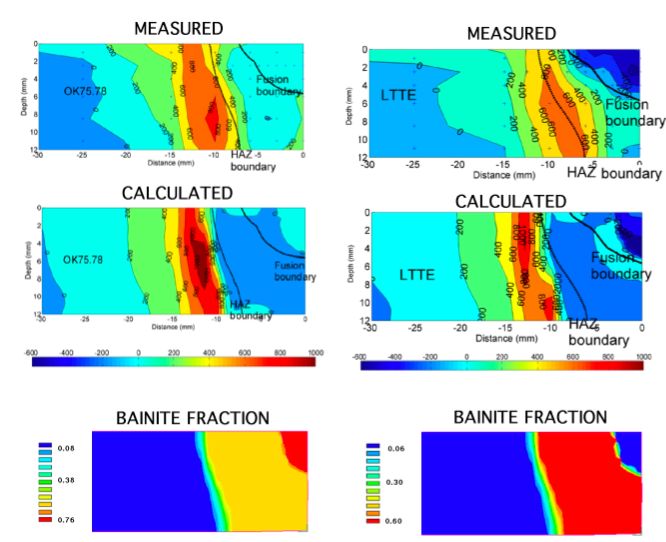

Weld residual stresses often approach, or exceed, the yield strength of the material, with serious implications for the integrity of engineering structures. It is not always feasible to measure residual stresses, so integrity assessments often rely heavily on numerical models. In ferritic steels, the credibility of such models depends on their ability to account for solid-state phase transformations that can have a controlling effect on the final residual stress state. Furthermore, a better understanding of weld transformations provides an opportunity to engineer the weld stress state and microstructure for improved life. In this paper the complementary merits of synchrotron X-ray and neutron diffraction are exploited both to verify and refine weld models and to inspire the development of weld filler metals to control weld stresses. In terms of weld filler metal design, X-ray diffraction is used to characterize phase transformations in real time during realistic weld cooling cycles, for understanding small-scale behaviour, and identifying features that need to be incorporated into finite-element models. Meanwhile, neutron diffraction is used to elucidate the practical consequences of solid-state phase transformations on the macroscopic scale, thereby providing crucial validatory structural integrity data.
Metallurgical and Materials Transactions A 39A (2008) 3070-3078.

| Coalesced | Foam | TWIP | FSW | 3D |
| Texture | Properties | Silicon | Synchrotron | Models |
| Neural Networks | Creep | Mechanicallly Alloyed | Theses | Retained Austenite |
| PT Group Home | Materials Algorithms |